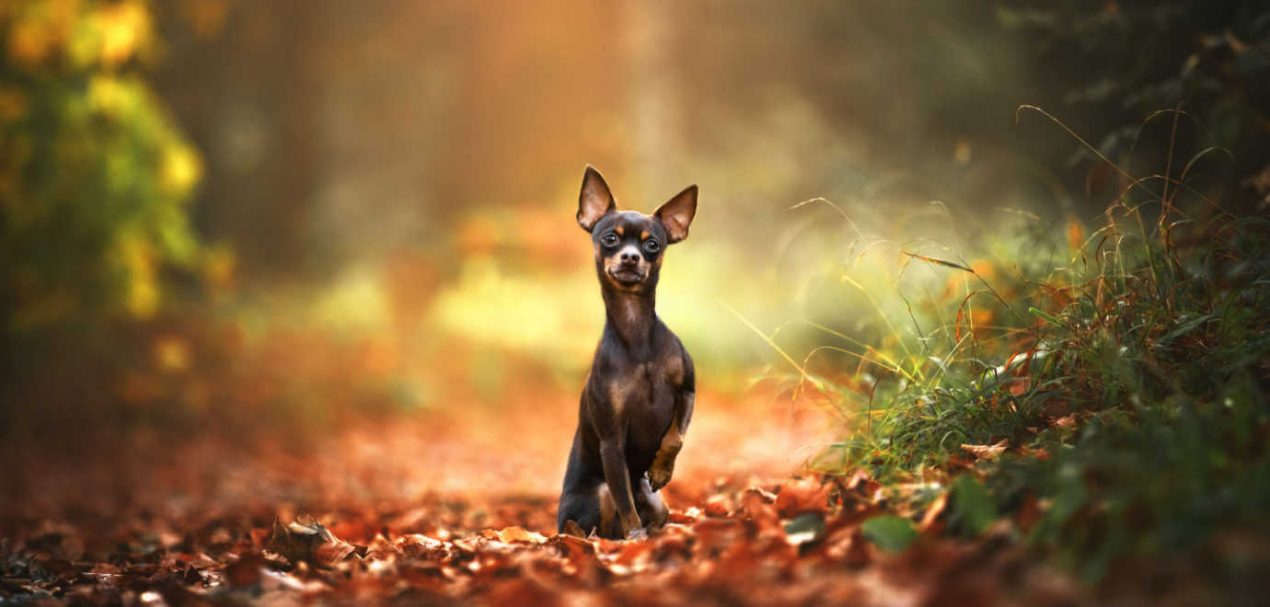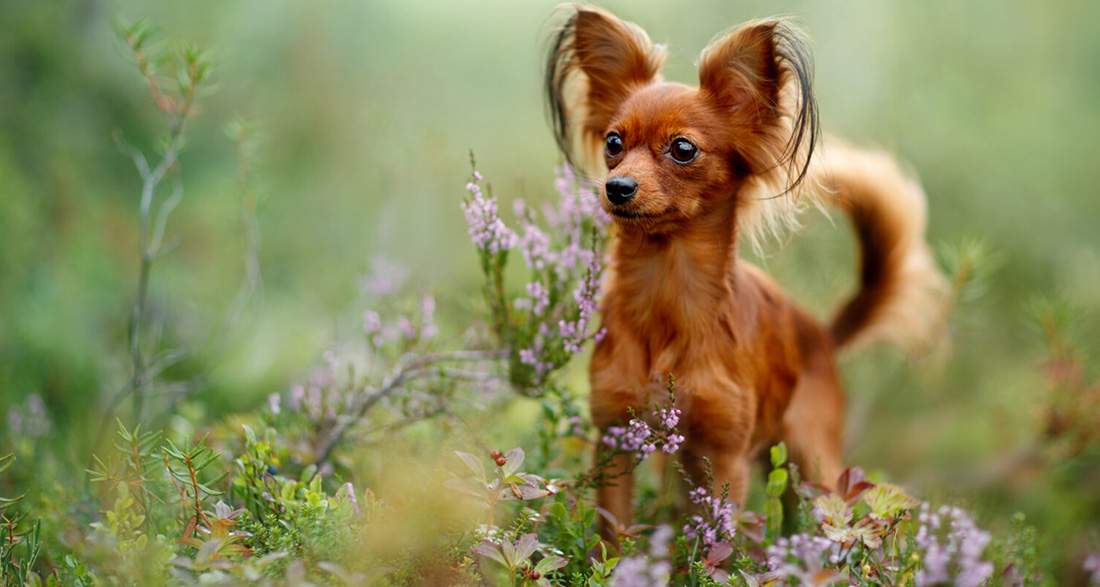The Russian Toy, also known as the Russian Toy Terrier, is a small dog breed bred in Russia and popular as a companion dog. Despite its small size, the breed has a big personality and is known for its adaptability and intelligence. In this article, we will explore the appearance, temperament, acquisition, puppy development and training, care, health and hereditary diseases, as well as interesting facts about the Russian Toy.
History of the Russian Toy
The history of the Russian Toy dates back to the 18th century when the breed was developed in Russia. In the past, this breed was highly favored among the nobility and often kept as a companion and society dog. However, during World War II, many dogs perished, leading to the breed being forgotten. It wasn’t until the 1990s that the Russian Toy experienced a comeback and was rediscovered by breeders.
The breed traces its roots to the English Toy Terrier, which was brought to Russia and crossed with small local dogs to create the present-day Russian Toy. Formerly known as the “Russian Toy Terrier,” the official name of the breed has been “Russian Toy” since 2009. The FCI categorizes the Russian Toy in Group 9: Companion and Toy Dogs.
Breed Overview
GROUP: Toy
HEIGHT: 8 to 11 inches
WEIGHT: Up to 6.5 pounds
TEMPERAMENT: Loyal, bold, lively, companionable, protective
COAT: Smooth and short
COAT COLOR: Black and tan, brown and tan, blue and tan, or red with or without black or brown
HYPOALLERGENIC: No
LIFE SPAN: 12 to 14 years
Appearance
The Russian Toy is an elegant dog with a narrow face and large, expressive eyes. It is a small dog with a shoulder height of about 20 to 28 cm and a weight of 1.5 to 3.5 kg. There are two coat varieties: short-haired and long-haired. The short-haired Russian Toy has smooth and shiny fur, while the long-haired Russian Toy has long, silky hair. Coat colors can vary and include black, brown, red, sable, white, or cream. The dog’s head is small and triangular, with large, alert eyes and upright ears.

Temperament and Character
The Russian Toy is a lively and active dog that requires plenty of exercise and mental stimulation. Despite its small size, it has high energy and endurance, making it an excellent companion for active individuals. The Russian Toy is an intelligent and attentive dog that learns quickly and enjoys collaborating with its owner. Known for their friendly nature, these small dogs are affectionate and tend to form close bonds with their human companions. They possess a strong protective instinct and are often wary of strangers. However, with proper socialization, they can also be friendly and lovable companions.
| Affection Level | High |
| Friendliness | High |
| Kid-Friendly | Low |
| Pet-Friendly | Medium |
| Exercise Needs | Medium |
| Playfulness | High |
| Energy Level | High |
| Trainability | Medium |
| Intelligence | Medium |
| Tendency to Bark | Medium |
| Amount of Shedding | Low |
Acquiring
If you decide to get a Russian Toy, it’s essential to research the breed and ensure it suits your lifestyle. This breed is not for couch potatoes; it requires ample exercise and engagement. Additionally, be aware of the costs; a Russian Toy can range from $800 to $2000, depending on the breeder and lineage. On average, you can expect to pay around $1500.
Finding a reputable breeder who has healthy and well-socialized puppies is crucial. You can contact the Russian Toy Terrier breeding association to locate a suitable breeder in your area. Visit the breeder and closely observe the puppies and their parents. A good breeder will also ask you many questions to ensure you are the right match for a Russian Toy.
Puppy Development and Training
Russian Toys are very intelligent and quick learners. However, it’s crucial to start their training correctly from the beginning. This is vital for turning them into well-behaved and responsible dogs. Puppies are naturally curious and playful, and it’s up to their owners to guide them through their journey to adulthood. Socialization is a crucial part of a puppy’s development. It’s important to expose the puppy to various people, other dogs, and different environments from an early age. Early socialization can help prevent behavioral problems.
Training is also essential for the education of a Russian Toy puppy. It’s advisable to start with training early and practice regularly with the puppy. A good starting point is to teach simple commands like “sit,” “stay,” and “come.” Training should always be positive and done in a playful manner to motivate the puppy and build trust.

How to Care for a Russian Toy
Once you’ve decided to welcome a Russian Toy into your home, be aware of the requirements of this breed. Russian Toys are very affectionate and love spending time with their owners. Therefore, they should not be left alone for too long. If you work or spend a lot of time outside the home, it’s essential to have a plan for keeping your dog occupied and cared for while you’re away.
The size of the Russian Toy makes them ideal for apartment living or smaller houses. They don’t need much space to run around, but they do require regular walks and sufficient exercise and mental stimulation. Therefore, ensure that you have enough time to schedule regular walks and playtime with your dog.
Russian Toy dogs have an average lifespan of 12 to 15 years.
Russian Toys and Children
Due to their size, Russian Toys are highly adaptable and get along well with children. They are patient and affectionate, often serving as playmates for kids. However, it’s crucial to educate your children on how to treat a dog respectfully, and you should always supervise interactions between the dog and children.
Russian Toys and Other Pets
This dog breed very compatible with other pets due to their size and gentle nature. They can get along well with other dogs, cats, and even small rodents, provided they are properly socialized.
Activities
Russian Toys are intelligent dogs that love learning new things and playing. You can engage your dog with simple tricks and tasks that enhance its mental abilities and physical coordination. Russian Toys also enjoy outdoor activities and can be taken on short walks to longer hikes.
Grooming
Grooming a Russian Toy is relatively easy as they have short hair and do not shed much. However, regular brushing is necessary to keep their coat healthy and shiny. Brushing helps keep the coat clean and prevents matting. Additionally, pay attention to cleaning your dog’s teeth and ears regularly to avoid infections and other issues. Another crucial aspect is the nutrition of your Russian Toy. Ensure that you use high-quality food tailored to the needs of small dogs. The amount of food your dog needs depends on its age, size, and activity level. Your veterinarian can help determine the right quantity and type of food for your dog.
Health and Hereditary Diseases
Like all dog breeds, the Russian Toy may be prone to certain diseases that require attention. Some of these conditions are hereditary, while others may be caused by poor nutrition or inadequate care. Some common health problems in Russian Toys include patellar luxation, hip dysplasia, and dental issues.
Regular veterinary check-ups are essential to ensure your dog stays healthy. A veterinarian can help you detect signs of illness early and recommend the appropriate treatment.
Conclusion
Overall, Russian Toys are sweet and loving companion dogs suitable for almost anyone looking for a small and affectionate pet. They are intelligent, curious, and adaptable, making them a wonderful addition to any family.


